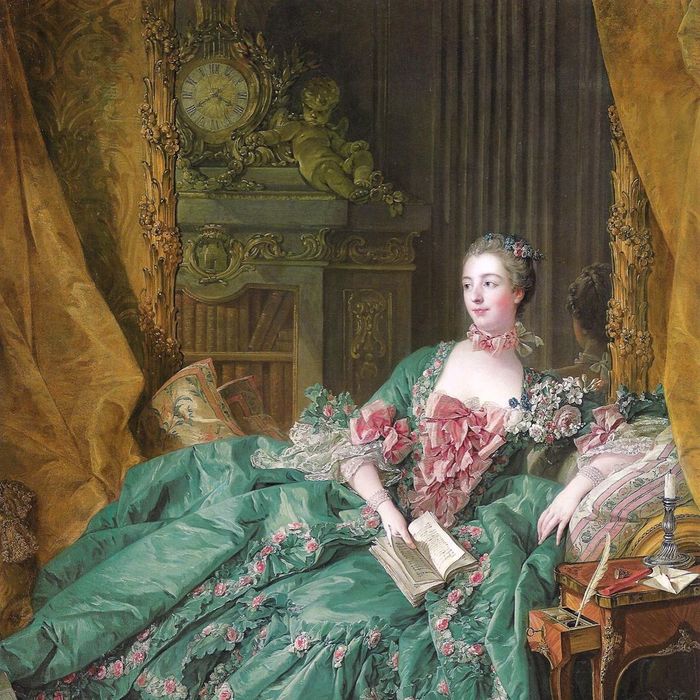Compacts and Cosmetics: preserving the lives of Victorian women and beyond
“It’s a story of women, and it’s a story that in some ways is very unchanging”: Caterina Bragoli talks to creator and historian Madeleine Marsh about the evolution of post-Victorian beauty ideals and her popular book Compacts and Cosmetics
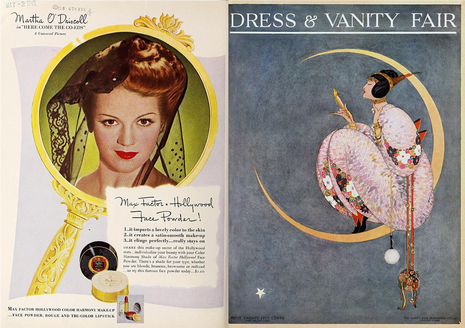
Over the course of lockdown, an interesting paradox made itself known: while so many felt unwilling to pick up a makeup brush or put on a ‘face’, simply with nowhere to go, I found myself realising the profound and transformative power of makeup, both with regards to self-esteem and feeling productive. Beauty and fashion play such an intrinsic role in the lives of those who wish it to, and in a contemporary climate its ready availability and presence in pop culture make it a free-flowing form of expression for so many.
In pursuit of more knowledge, an astoundingly illuminating read was creator, historian and collector Madeleine Marsh’s book Compacts and Cosmetics: Beauty from Victorian Times to the Present Day. Initially tasked with writing on the history of powder cosmetics, Marsh began examining the makeup of “ordinary people” as well as that of the upper classes, thus piecing together an ever-evolving picture of each generation’s bespoke beauty ideals, and the place of makeup in everyday life. I was able to speak to Marsh, while she was preparing for a pop-up gallery, about the creation of her book and her personal insights into the enigmatic world of Victorian makeup.
Caterina Bragoli: I’m hoping this bizarre and difficult period has been okay for you!
Madeleine Marsh: It’s all been fine for me, given I’m a maker and I’m a mudlark, and mudlarking on the Thames... where could you be more isolated than that! If you’re a maker it’s different because you make in response to things. I’ve been making my lockdown bracelets and necklaces all made with vintage keys, reflecting lockdown and wanting to be unlocked, and another one all with broken vintage watches about how we’ve lost our sense of time!
CB: And it’s so paradoxical too because it feels like time is flying by but is also so stagnant.
MM: I know, that’s exactly what I wanted to express. Gosh it will be nice when this is all over. In terms of fashion, I wonder, when this is all over, whether we will have a roaring twenties, having been wandering round in trainers, will there be heels and outrageous party frocks? There could well be.
CB: I think there could be, especially with fashion and this idea of wanting to break free.
“Fashion always tells the story of the time”
MM: Fashion always tells the story of the time. I dress vintage a lot. Cambridge Market used to be the most fantastic place. When I started collecting vintage it wasn’t a big thing, it was more of an underground thing, for example a sixties dress for a fiver, that’s what I did at Cambridge. I wasn’t one for lectures!
CB: I would love to know how you began collecting! What was it about beauty items that inspired you to start collecting?
MM: I like things that give a picture of ordinary life, and collectibles are 3D history you can hold in your hand. So much makeup comes with vestiges of its contents, you can really smell the past! I was commissioned to write a book on powder compacts because powder compacts were an established collectible, *yawn*. I actually wanted to see everything that goes with it and I got very interested in the history behind these things.
You can go and see the best dresses in the world… Is there a single tube of lipstick? No! You can go to places and see clothes, but no woman would ever have put those clothes on without makeup to match. So I became fascinated by the history of makeup and I wanted to see these items. What I was interested in was the lipsticks, the lady shavers, the deodorants, the really ordinary things which you don’t see anywhere. I wanted things that had been used because there was this story coming up before my eyes from the objects I was buying. The story came out I got absolutely fascinated, because it’s a story of women and it’s a story that in some ways is very unchanging.
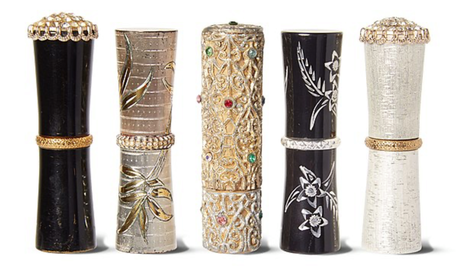
CB: Yes, the circularity in terms of makeup and trends.
MM: Yes! The dichotomy of it, from the dawn of time makeup has both been a pleasure and duty, and a blessing and a curse… we do different things at different periods, we emphasize different parts of our body, but there are certain truths that remain and that really interested me as well.
CB: I was fascinated when you mentioned that Jonathan Swift’s The Lady in the Dressing Room uses makeup as mockery. Victorian women were subjected to a great deal of shame for wearing makeup, why was this?
“Ladies’ faces were supposed to be unpainted and a good soul was supposed to give you a fair complexion”
MM: We had just come out of the eighteenth century, think of pictures of that time and ladies with their patches and wigs. It had been a period of huge partying and excess, and one of the icons of the period was King George IV, with all his mistresses, and the country was in debt, the monarchy was in shambles. So, Queen Victoria is the one who shapes the monarchy and the image of a solid family, lots of kids, emphasis on duty. Ladies’ faces were supposed to be unpainted and a good soul was supposed to give you a fair complexion. One generation always has to react against another.
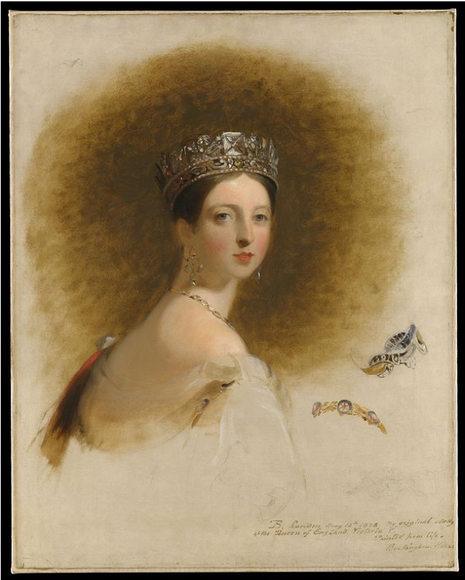
CB: But why was it seen as so vulgar, with men in particular mocking women?
MM: What was really interesting with the Swift poem was, from the male attitude, there was a demand for women to be perfect and you don’t want to know about the smelly bits and the hairy bits. It’s a duality and a dichotomy that just is part of beauty and part of being a woman. I mean, now things have changed, and men worry a lot more about their looks and their beauty. We inhabit a different age now: male anxieties and the number of men who have eating disorders. We’re in a world now that’s defined by the selfie.
CB: That leads onto a discussion of beauty standards and perfection in an age of social media, perhaps like the perfection Victorian women were subjected to?
MM: Impossible perfection is very scary both psychologically and in terms of people being a target for manufacturers of beauty products, because you are - we’re all - cash cows and people are very easy to target and market. One of the things that really fascinated me in the 20s was the development of negative advertising in magazines, and that’s: “are you wrinkly”, “are you hairy”, “do you have a saggy chin…”. I mean, the ads are vicious if you read the text.
CB: Is this what drove the mass production of beauty products?
MM: It really takes off big time again, because that’s cemented by another tech innovation, which is cinema. Thanks to cinema we’d never seen faces that big and there are new icons for us. With cosmetics, it goes hand in hand with technological innovation and how you see people, whether the invention of cinema or the phone in your pocket now… it’s all doing the same thing. How we see our icons, what that makes us think we should be and what we should buy. Maxfactor also pioneered these film star looks, then produced his retail line which sells all around the world.
CB: And that’s how it all started!
MM: It began because people wanted to look like Jean Harlow or Clara Bow. Maxfactor was the big name, so his name would be advertised as “Right, so, do you want to look like the stars? Now you can!”
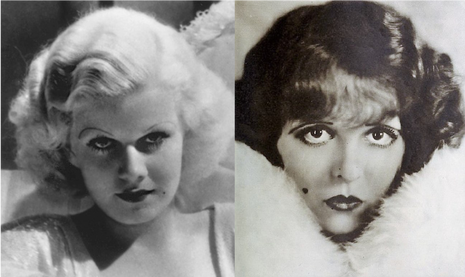
CB: So it became acceptable in a way it never had before?
MM: What you did find in the 1900s to 20s were advertisements and occasional references to face creams or powders, almost no makeup. Suddenly by the 30s, it’s all about makeup advertisements, and by the early 30s if you’re not putting your makeup on you’re letting the side down! It’s such a quick change, and you can see it in the magazines. Suddenly, there’s ads for lipsticks, people like Helena Rubinstein, one of the great pioneers of beauty. When she starts off, she’s doing creams and powders (one of her ads says “Buy cream: if you put this on you wont need duplicitous cosmetics”) but by the 30s shes saying “oh look, thrilling lipsticks!”
CB: Going back to Victorian beauty ideals, were they linked to the ‘virtual prison’ that you say fashion was during the Victorian times? The waist was even squeezed with steel and whalebone, and it ended up injuring women. The crinoline too.
MM: I’ll never forget going to an exhibition once and they actually had the skeleton of a woman who would have worn a corset for a long time, and how her body would have distorted. It’s really interesting… we are so lucky to live - now pandemic aside! - but the idea of that constraint for fashion the whole time, and never letting the sun touch your body, or going out with gloves on and layers of petticoat. The sheer tedium of it and physical discomfort!
CB: All for what I wonder.
MM: The image of beauty and what we’re told beauty is for so many reasons at a certain period. Women’s dress reflected the fact that we were controlled. We didn’t have control over our finances, women couldn’t do jobs and what not, we were so controlled and now it’s different!
CB: Thankfully!
MM: We have our own problems in the modern age, but there is a freedom, a freedom of choice.
 News / Caius mourns its tree-mendous loss23 December 2025
News / Caius mourns its tree-mendous loss23 December 2025 Comment / Yes, I’m brown – but I have more important things to say22 December 2025
Comment / Yes, I’m brown – but I have more important things to say22 December 2025 News / Cambridge welcomes UK rejoining the Erasmus scheme20 December 2025
News / Cambridge welcomes UK rejoining the Erasmus scheme20 December 2025 News / CUP announces funding scheme for under-represented academics19 December 2025
News / CUP announces funding scheme for under-represented academics19 December 2025 Interviews / Politics, your own way: Tilly Middlehurst on speaking out21 December 2025
Interviews / Politics, your own way: Tilly Middlehurst on speaking out21 December 2025

